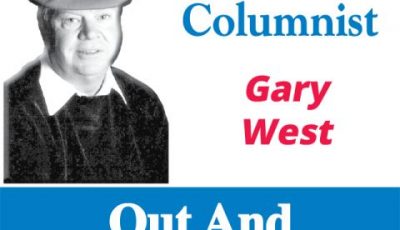Out and About Ky. Style: John Y. Brown
At one time there were two high profile professional basketball leagues. While the NBA was older and more established, in 1967 a group of high rollers got together and started the American Basketball Association.
Almost immediately the new league became a thorn in the side of the NBA, particularly when it came to buying players coming out of college, and even “raiding” their best talent.
The ABA struggled financially, however. For nine years teams came and went until finally in 1976 an agreement was reached where the NBA would absorb four ABA teams and the remaining three would be paid to go away.
One of the teams in the middle of it all was the ABA Kentucky Colonels. The Colonels were big time. Featuring Artis Gilmore, Dan Issel, Louie Dampier and Darel Carrier, just to name a few. For six-and-a-half years former Kentucky governor John Y. Brown was involved in the Louisville-based team’s ownership. Even though the Colonels were one of the most successful teams in the new league, John Y. and his wife, Ellie, decided they would take the $3.3 million and run. His other option was spending $3 million and buying the Colonels into the NBA and keeping them in Louisville.
That’s how close Louisville came to having an NBA team in 1976.
Louisville, today, is the largest city in America without a major league sports team. Look at Indianapolis, Nashville, Memphis and Charlotte. At one time Louisville was considered on par with those cities. Some even have multiple major sport teams.
My friend Lloyd Gardner arranged for us to meet John Y. a few years ago at his Lexington townhouse to talk about the Kentucky Colonel team. Surrounded by framed photos of himself with the likes of President Jimmy Carter, Ronald Reagan and Bill Clinton, John Y. freely talked about his days with the Colonels, Kentucky Fried Chicken and his first date with Phyllis George. It was a very interesting afternoon.
I enjoy digging out stories that are on the verge of being lost to time, and the merger of the NBA and ABA hides one of the greatest business deals in the history of sports.
hen the NBA accepted Denver, Indiana, San Antonio, and New York, it left three teams out. Those three teams were left to strike their own deals. The Virginia Squires folded at the end of the season, and the Spirit of St. Louis, like the Colonels, weren’t going away quietly.
As creative as John Y. was, it pails in comparison to what the Silna brothers, Ozzie and Daniel, pulled off with their St. Louis ABA team.
They had made a boat load of money in the textile business, mainly polyester, but always wanting to own an NBA team, the next best thing was spending a million dollars on the St. Louis team. They hired a young man who was a recent graduate of Syracuse University broadcasting school to do the play-by-play. His name was Bob Costas.
To get to St. Louis the Silnas went at it in a round-about way. They failed to buy the NBA Detroit Pistons for $5 million, and soon turned to the ABA Carolina Cougars where they paid $1 million and then moved the team to St. Louis.
Ozzie and Daniel Silna were hellbent on getting an NBA team and knew a regional team like Carolina would not be looked on favorable for merger. After all, St. Louis had lost its NBA team to Atlanta and at the time was the largest city in the country without pro basketball. The city was perfect.
When the merger finally did come about it was not perfect. St. Louis was left out. The Silnas took $2.2 million to fold. It was less than John Y. and Ellie received, but someone, whether it was the Silnas or their lawyer, decided to include something about television rights in their deal.
No big deal, what the heck, was the feeling of the four ABA teams soon to be joining the NBA. The NBA television market in 1976 was not even a blip on the TV ratings. What was shown was often tape delay or late news.
The Silna’s deal wasn’t about NBA revenue, but instead 1/7 of any television revenue generated by the four former ABA teams. (The 1/7 came about from the seven ABA teams still playing when the season ended.)
But here is the kicker. The deal was in perpetuity. That’s forever … as long as the NBA exists.
By 1982 the NBA wasn’t sure about what kind of deal they had with the Silnas. The payouts had been somewhat modest. However, with the arrival of Magic Johnson and Larry Bird, networks were becoming more interested in the NBA than ever before.
Originally thought to be 1/7 of nothing was now evolving to big money. The NBA now offered the Silnas $5 million to be paid over five years. The brothers said they would take $8 million to go away. The NBA refused.
As the magnitude of this began to increase, with literally no end in sight, an agreement was finally reached. In 2014, after Ozzie and Daniel Silna had already received $300 million on their 1976 contract, the NBA paid them an additional $500 million in one lump sum to end the deal.
That’s $800 million they made from a team that had not played a game for over 45 years.
In sports business deals the story has become legendary. And even though John Y. Brown was able to turn his basketball money into a “$10,000 down and a $1.5 million loan,” to acquire the NBA Buffalo Braves he traded for the Celtics, it pails in comparison to what the Silna brothers pulled off.
Ozzie Silna died in 2016 at the age of 83.
There’s no excuse, get up, get out and get going! Gary P. West can be reached at westgarypdeb@gmail.com.





